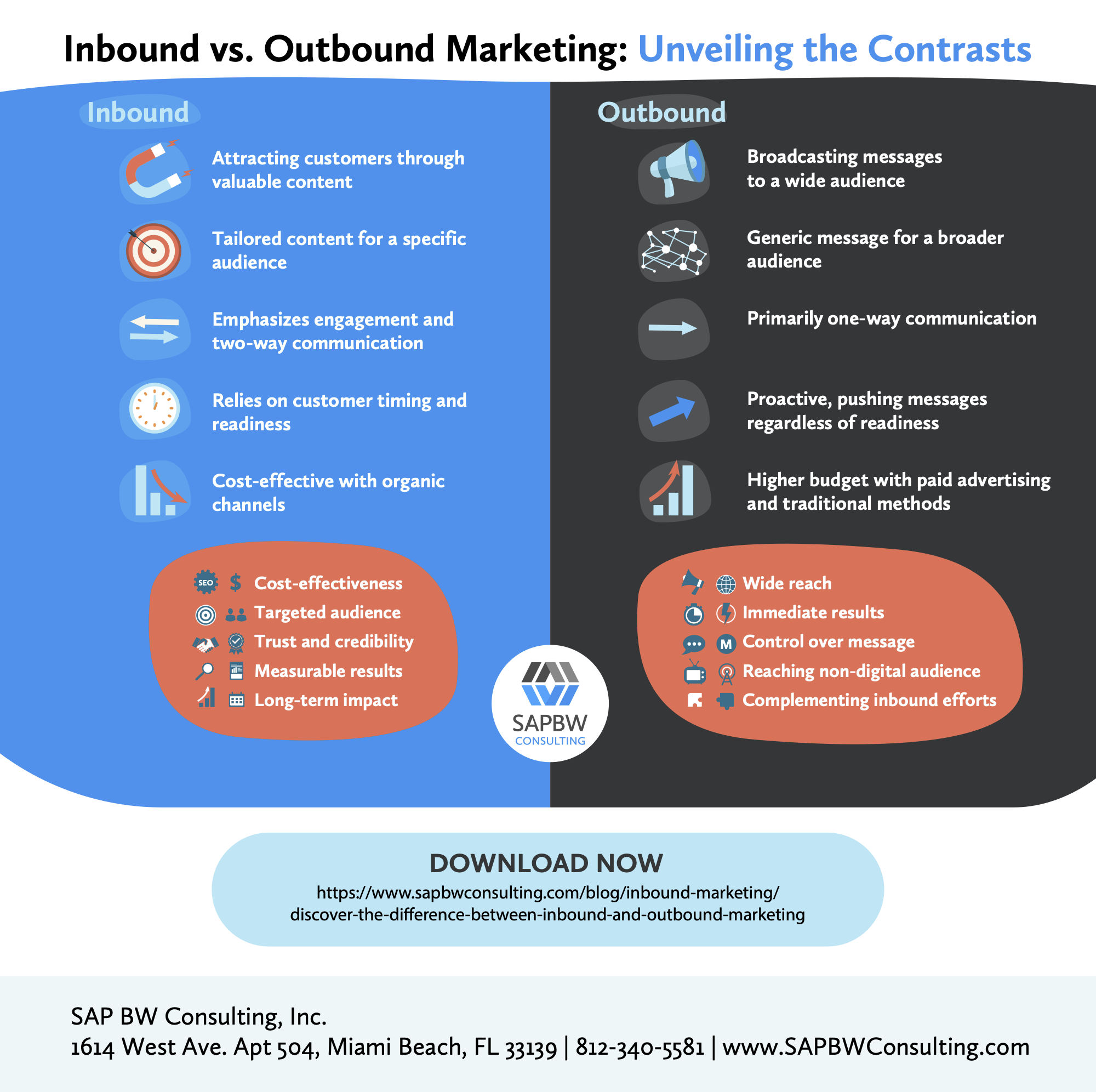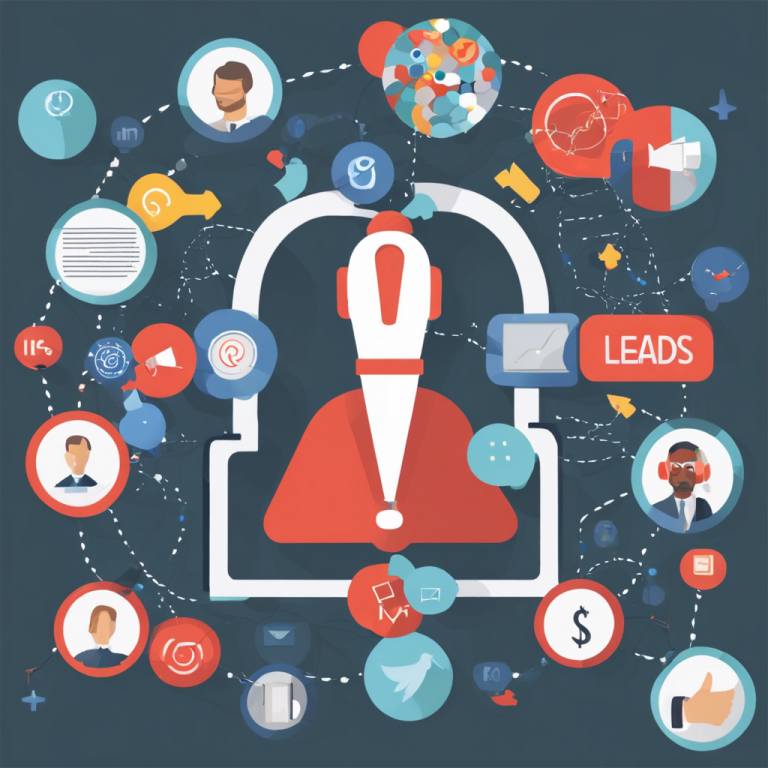Discover the contrasting approaches of inbound and outbound marketing and how they can impact your business growth.
Understanding Inbound Marketing
Inbound marketing is a strategy that focuses on attracting customers through relevant and valuable content. It involves creating and sharing content that is tailored to the needs and interests of your target audience. This content can take the form of blog posts, social media updates, videos, ebooks, and more. The goal of inbound marketing is to attract potential customers and build trust by providing them with valuable information that helps solve their problems or meet their needs.
One of the key aspects of inbound marketing is the use of search engine optimization (SEO) techniques. By optimizing your content for search engines, you can increase its visibility and attract more organic traffic to your website. Inbound marketing also emphasizes the importance of engaging with your audience through various channels, such as social media platforms, email marketing, and online communities.
Overall, inbound marketing focuses on creating valuable content, building relationships with your audience, and attracting potential customers through organic channels.
Exploring Outbound Marketing
Outbound marketing, on the other hand, is a traditional marketing approach that involves reaching out to potential customers through various outbound channels. This includes methods such as cold calling, direct mail, TV and radio advertising, and print advertisements. Unlike inbound marketing, which aims to attract customers by providing value, outbound marketing focuses on pushing your message out to a wide audience.
Interruption Marketing.
Outbound marketing is often characterized by interruptive tactics that aim to grab the attention of potential customers. The goal is to create awareness and generate leads by reaching out to a large number of people. While outbound marketing can be effective in reaching a broad audience, it is often seen as less targeted and personalized compared to inbound marketing.
In recent years, outbound marketing has evolved to incorporate digital channels, such as display advertising, online banners, and sponsored content. However, it still retains its core focus on actively reaching out to potential customers rather than waiting for them to come to you.
Key Differences Between Inbound and Outbound Marketing

The main differences between inbound and outbound marketing can be summarized as follows:
- Approach: Inbound marketing focuses on attracting customers by providing valuable content and building relationships, while outbound marketing focuses on pushing your message out to a wide audience.
- Targeting: Inbound marketing aims to attract a specific target audience through tailored content and targeted advertising. Outbound marketing targets a broader audience with a generic message.
- Communication: Inbound marketing emphasizes two-way communication and engagement with the audience, while outbound marketing is often one-way communication.
- Timing: Inbound marketing relies on the customer's timing and readiness to engage with your brand, while outbound marketing is more proactive and pushes the message out regardless of the customer's readiness.
- Cost: Inbound marketing can be more cost-effective in the long run as it focuses on organic channels and building long-term relationships. Outbound marketing often requires a higher budget due to the use of paid advertising and traditional marketing methods.
Benefits of Inbound Marketing
Inbound marketing offers several benefits for businesses:
- Cost-effectiveness: By creating valuable content and optimizing it for search engines, you can attract organic traffic to your website without spending a significant amount on paid advertising.
- Targeted audience: Inbound marketing allows you to attract a specific target audience that is more likely to be interested in your products or services, increasing the chances of conversion.
- Building trust and credibility: By providing valuable information and engaging with your audience, you can build trust and credibility for your brand, which can lead to long-term customer relationships.
- Measurable results: Inbound marketing strategies can be easily tracked and measured, allowing you to analyze the performance of your campaigns and make data-driven decisions.
- Long-term impact: By consistently creating valuable content and building relationships with your audience, you can establish your brand as a thought leader in your industry and attract customers in the long run.
Benefits of Outbound Marketing
Outbound marketing also offers certain benefits:
- Wide reach: Outbound marketing allows you to reach a large audience and create awareness for your brand or product quickly.
- Immediate results: Unlike inbound marketing, which may take time to generate results, outbound marketing can yield immediate responses and leads.
- Control over message: With outbound marketing, you have complete control over the message you want to convey to your audience, allowing you to deliver a consistent brand image.
- Reaching non-digital audience: Outbound marketing methods such as TV and radio advertising can help you reach potential customers who may not be active online.
- Complementing inbound efforts: Outbound marketing can be used to complement your inbound marketing efforts and reach a broader audience that may not be aware of your brand or actively searching for your products or services.
Inbound Lead Generation
We are specialized in helping customers use the Hubspot Inbound Marketing and Sales Platform to generate Inbound Leads and Inbound Sales. Not everybody is right for Inbound Marketing. Find out if you're business is a good fit by taking our Inbound Marketing Fit Quiz.



